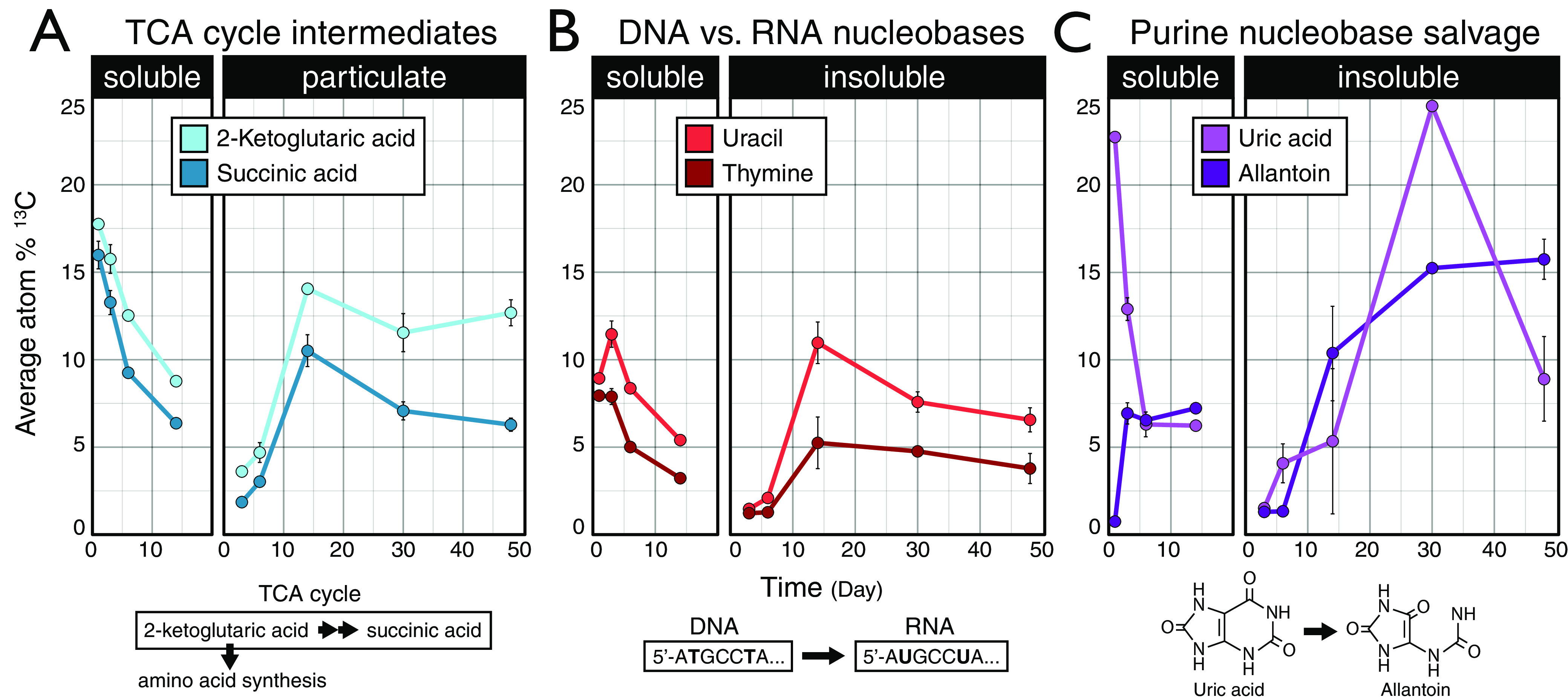FIG 6.

Maximum 13C enrichment of TCA cycle intermediates, nucleobases, and purine nucleobase degradation products differed between soluble and insoluble carbon sources. (A) Relative 13C enrichment of TCA intermediates 2-ketogultaric acid (also 2-oxoglutaric acid) and succinic acid. (B) Relative 13C enrichment of nucleobases uracil and thymine. (C) Relative 13C enrichment of uric acid and allantoin. (Note that the degradation of purine bases generates uric acid, which is then cleaved to produce allantoin as part of a salvage pathway.) Carbon sources were aggregated by response into two classes: soluble (glucose, xylose, amino acids, lactic acid, glycerol, and oxalic acid) and insoluble (cellulose and palmitic acid). Points represent average atom% 13C values. Error bars correspond to standard deviations among triplicates. In most cases, error bars are narrow and obscured by the data point, excluding day 14, where only a single sample was taken for all carbon sources except for oxalate and cellulose. The 13C enrichment of metabolites did not account for differences in absolute metabolite concentrations. Thus, comparisons between metabolites may or may not accurately reflect changes in total 13C.
